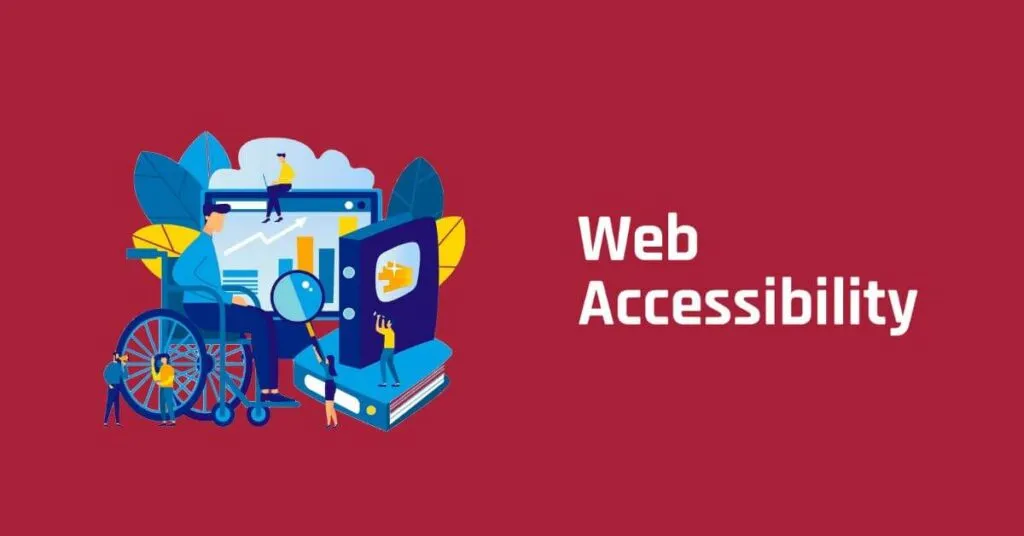In a world where the internet is increasingly becoming an integral part of our lives, web accessibility is an essential component for ensuring that all users, regardless of their disabilities, are able to access and use the web. Web accessibility refers to the practice of designing websites, web applications, and other online content with the goal of making them available to as many people as possible, including those with disabilities. Web accessibility is becoming increasingly important, as more and more people rely on the Internet to complete various tasks, from shopping to researching.
Table of Contents
What is Web Accessibility?
Web accessibility is the practice of designing websites, web applications, and other online content with the goal of making them available to as many people as possible, including those with disabilities. Accessibility is an essential part of the web design process, and it involves making sure that all users, regardless of their disabilities, can access and use the web. With the accessible design, a web development company in Houston not just makes sure that people with disabilities can access the web, but that all users have an equal opportunity to access and use the web.
This includes making sure that it is easy for everyone to use the web, regardless of their device, browser, or operating system. It also involves making sure that web content is easy to understand and navigate, and that it is usable by all users, regardless of their abilities.
Why is Web Accessibility Important?
1. Improved Accessibility to Information: Web accessibility provides people with disabilities the same access to information as everyone else. By using web accessibility features, people can access content that may have been unavailable to them before. For example, by using an accessible website, people with visual impairments can access information through voice-activated software, while people with hearing impairments can access information through text-to-speech readers.
2. Increased Reach and Engagement: Web accessibility also widens the potential reach of a website. By making sure your website is accessible, you can reach a larger audience and increase engagement levels. For example, by using alt-text on images, you can make sure your website is visible to those who are visually impaired and may not be able to see images.
3. Improved User Experience: Web accessibility also enhances the user experience for everyone. For example, when websites are built with web accessibility in mind, they are more intuitive and easier to navigate. This can provide a better user experience for both disabled and non-disabled users.
4. Increased Credibility: By making sure your website is accessible, you are also sending a message to your customers that you are a credible and responsible business. This can have a positive impact on your reputation and can help you to attract more customers.
5. Reduced Legal Risk: Finally, web accessibility can also help to reduce legal risk. If your website isn’t accessible, you could be exposed to legal action. For example, in the United States, the Americans with Disabilities Act (ADA) requires that websites be accessible to people with disabilities.
Web Accessibility Guidelines
When designing and developing a website, it is important to consider the needs of all users. This includes people with disabilities, who may require special features or design elements in order to access and use the website.
There are a number of web accessibility guidelines that need to be followed in order to ensure that a website is accessible to all users. These guidelines include:
1. Text Alternatives: Text alternatives should be provided for images, audio, and video content. This ensures that people who are visually impaired or who cannot hear can still access the content.
2. Keyboard Accessibility: Websites should be designed so that they can be navigated using a keyboard. This ensures that people who cannot use a mouse or trackpad can still access and use the website.
3. Color Contrast: Websites should use sufficient color contrast so that text and images are clearly visible to all users, including those with low vision.
4. Resizable Text: Text should be resizable so that people with visual impairments can adjust the size of the text according to their needs.
5. Navigation: Websites should be easy to navigate, and should be organized in a logical and consistent manner.
6. Page Titles: Each page of a website should have a unique title, which helps users orient themselves and quickly find the page they are looking for.
Conclusion
Web accessibility is an essential part of the web design process, and it is important to ensure that all users, regardless of their disabilities, can access and use the web. Making a website accessible involves creating an accessible design, creating accessible content, and using web accessibility tools. By taking these steps, designers can ensure that their websites are accessible to all users and that everyone has an equal opportunity to access the web.


